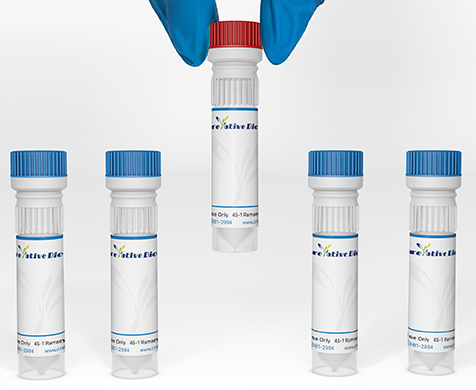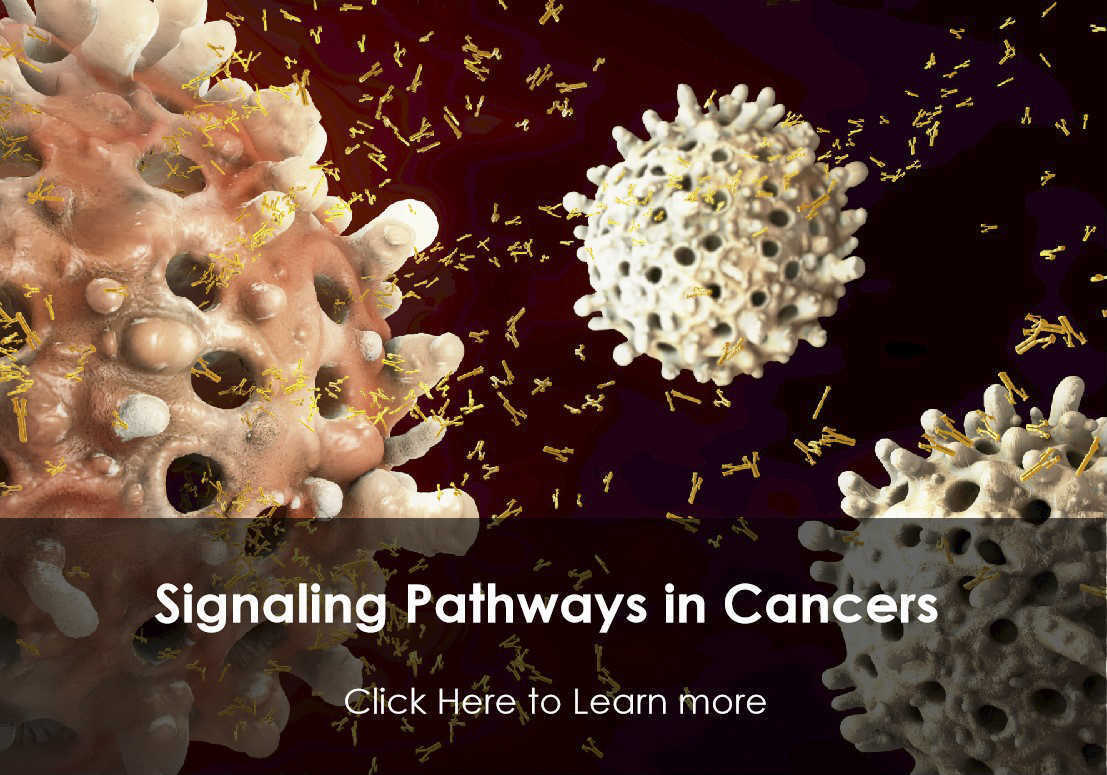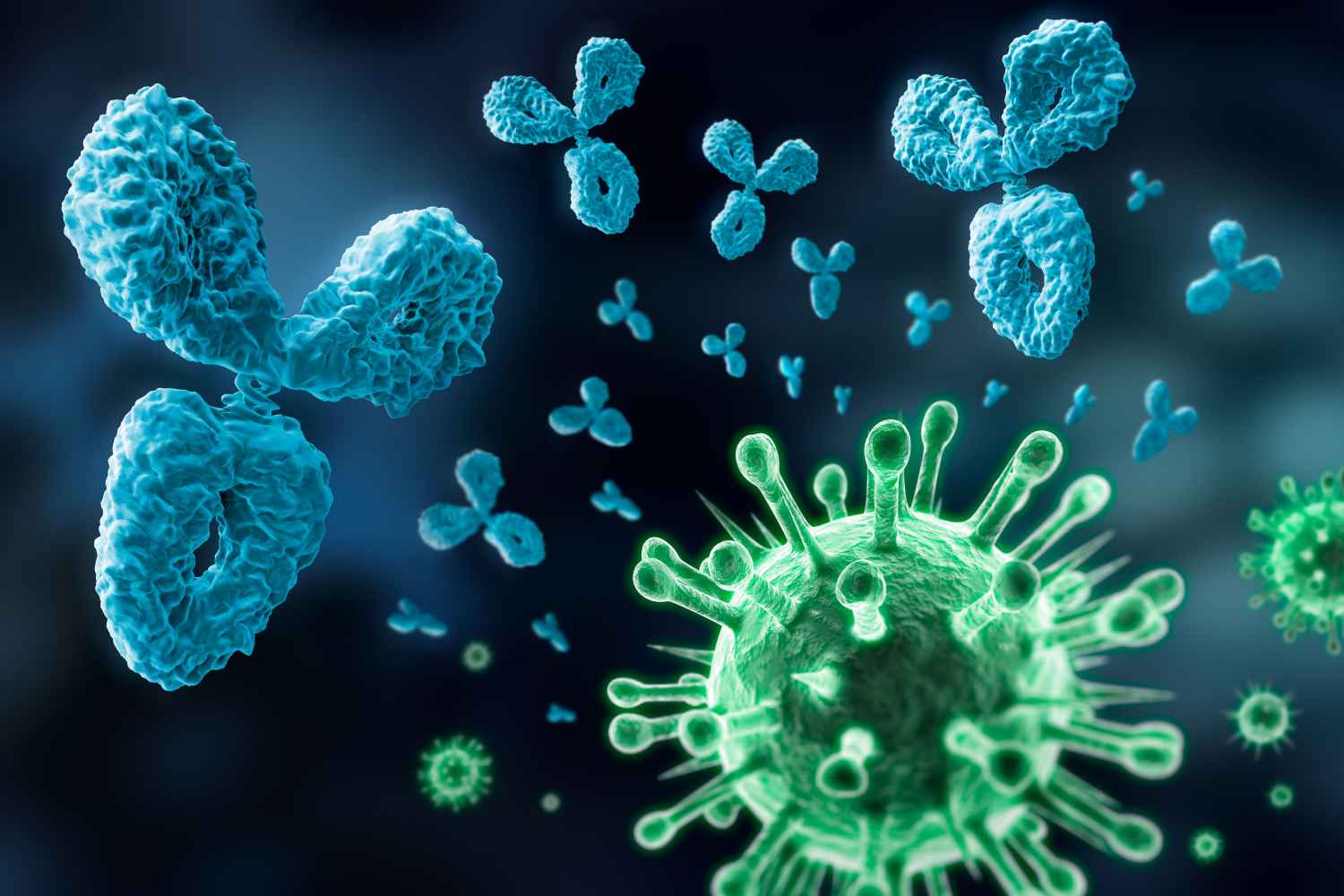TYROBP
This gene encodes a transmembrane signaling polypeptide which contains an immunoreceptor tyrosine-based activation motif (ITAM) in its cytoplasmic domain. The encoded protein may associate with the killer-cell inhibitory receptor (KIR) family of membrane glycoproteins and may act as an activating signal transduction element. This protein may bind zeta-chain (TCR) associated protein kinase 70kDa (ZAP-70) and spleen tyrosine kinase (SYK) and play a role in signal transduction, bone modeling, brain myelination, and inflammation. Mutations within this gene have been associated with polycystic lipomembranous osteodysplasia with sclerosing leukoencephalopathy (PLOSL), also known as Nasu-Hakola disease. Its putative receptor, triggering receptor expressed on myeloid cells 2 (TREM2), also causes PLOSL. Multiple alternative transcript variants encoding distinct isoforms have been identified for this gene. [provided by RefSeq, Mar 2010]
Full Name
TYROBP Gene(Protein Coding) TYRO Protein Tyrosine Kinase Binding Protein
Function
Adapter protein which non-covalently associates with activating receptors found on the surface of a variety of immune cells to mediate signaling and cell activation following ligand binding by the receptors (PubMed:9490415, PubMed:9655483, PubMed:10604985).
TYROBP is tyrosine-phosphorylated in the ITAM domain following ligand binding by the associated receptors which leads to activation of additional tyrosine kinases and subsequent cell activation (PubMed:9490415).
Also has an inhibitory role in some cells (PubMed:21727189).
Non-covalently associates with activating receptors of the CD300 family to mediate cell activation (PubMed:15557162, PubMed:16920917, PubMed:17928527; PubMed:26221034).
Also mediates cell activation through association with activating receptors of the CD200R family (By similarity).
Required for neutrophil activation mediated by integrin (By similarity).
Required for the activation of myeloid cells mediated by the CLEC5A/MDL1 receptor (PubMed:10449773).
Associates with natural killer (NK) cell receptors such as KIR2DS2 and the KLRD1/KLRC2 heterodimer to mediate NK cell activation (PubMed:9490415, PubMed:9655483, PubMed:23715743).
Also enhances trafficking and cell surface expression of NK cell receptors KIR2DS1, KIR2DS2 and KIR2DS4 and ensures their stability at the cell surface (PubMed:23715743).
Associates with SIRPB1 to mediate activation of myeloid cells such as monocytes and dendritic cells (PubMed:10604985).
Associates with TREM1 to mediate activation of neutrophils and monocytes (PubMed:10799849).
Associates with TREM2 on monocyte-derived dendritic cells to mediate up-regulation of chemokine receptor CCR7 and dendritic cell maturation and survival (PubMed:11602640).
Association with TREM2 mediates cytokine-induced formation of multinucleated giant cells which are formed by the fusion of macrophages (PubMed:18957693).
Stabilizes the TREM2 C-terminal fragment (TREM2-CTF) produced by TREM2 ectodomain shedding which suppresses the release of pro-inflammatory cytokines (PubMed:25957402).
In microglia, required with TREM2 for phagocytosis of apoptotic neurons (By similarity).
Required with ITGAM/CD11B in microglia to control production of microglial superoxide ions which promote the neuronal apoptosis that occurs during brain development (By similarity).
Promotes pro-inflammatory responses in microglia following nerve injury which accelerates degeneration of injured neurons (By similarity).
Positively regulates the expression of the IRAK3/IRAK-M kinase and IL10 production by liver dendritic cells and inhibits their T cell allostimulatory ability (By similarity).
Negatively regulates B cell proliferation (PubMed:21727189).
Required for CSF1-mediated osteoclast cytoskeletal organization (By similarity).
Positively regulates multinucleation during osteoclast development (By similarity).
TYROBP is tyrosine-phosphorylated in the ITAM domain following ligand binding by the associated receptors which leads to activation of additional tyrosine kinases and subsequent cell activation (PubMed:9490415).
Also has an inhibitory role in some cells (PubMed:21727189).
Non-covalently associates with activating receptors of the CD300 family to mediate cell activation (PubMed:15557162, PubMed:16920917, PubMed:17928527; PubMed:26221034).
Also mediates cell activation through association with activating receptors of the CD200R family (By similarity).
Required for neutrophil activation mediated by integrin (By similarity).
Required for the activation of myeloid cells mediated by the CLEC5A/MDL1 receptor (PubMed:10449773).
Associates with natural killer (NK) cell receptors such as KIR2DS2 and the KLRD1/KLRC2 heterodimer to mediate NK cell activation (PubMed:9490415, PubMed:9655483, PubMed:23715743).
Also enhances trafficking and cell surface expression of NK cell receptors KIR2DS1, KIR2DS2 and KIR2DS4 and ensures their stability at the cell surface (PubMed:23715743).
Associates with SIRPB1 to mediate activation of myeloid cells such as monocytes and dendritic cells (PubMed:10604985).
Associates with TREM1 to mediate activation of neutrophils and monocytes (PubMed:10799849).
Associates with TREM2 on monocyte-derived dendritic cells to mediate up-regulation of chemokine receptor CCR7 and dendritic cell maturation and survival (PubMed:11602640).
Association with TREM2 mediates cytokine-induced formation of multinucleated giant cells which are formed by the fusion of macrophages (PubMed:18957693).
Stabilizes the TREM2 C-terminal fragment (TREM2-CTF) produced by TREM2 ectodomain shedding which suppresses the release of pro-inflammatory cytokines (PubMed:25957402).
In microglia, required with TREM2 for phagocytosis of apoptotic neurons (By similarity).
Required with ITGAM/CD11B in microglia to control production of microglial superoxide ions which promote the neuronal apoptosis that occurs during brain development (By similarity).
Promotes pro-inflammatory responses in microglia following nerve injury which accelerates degeneration of injured neurons (By similarity).
Positively regulates the expression of the IRAK3/IRAK-M kinase and IL10 production by liver dendritic cells and inhibits their T cell allostimulatory ability (By similarity).
Negatively regulates B cell proliferation (PubMed:21727189).
Required for CSF1-mediated osteoclast cytoskeletal organization (By similarity).
Positively regulates multinucleation during osteoclast development (By similarity).
Biological Process
Biological Process actin cytoskeleton organization Source:UniProtKB
Biological Process apoptotic cell clearance Source:UniProtKB
Biological Process apoptotic signaling pathway Source:ARUK-UCL
Biological Process cellular defense response Source:ProtInc1 Publication
Biological Process forebrain development Source:ARUK-UCL
Biological Process intracellular signal transduction Source:ProtInc1 Publication
Biological Process microglial cell activation involved in immune response Source:UniProtKB
Biological Process myeloid leukocyte activation Source:UniProtKB1 Publication
Biological Process negative regulation of B cell proliferation Source:UniProtKB1 Publication
Biological Process negative regulation of interleukin-10 production Source:ARUK-UCL
Biological Process negative regulation of long-term synaptic potentiation Source:ARUK-UCL
Biological Process negative regulation of transforming growth factor beta1 production Source:ARUK-UCL
Biological Process neutrophil activation involved in immune response Source:GO_Central1 Publication
Biological Process osteoclast differentiation Source:MGI1 Publication
Biological Process positive regulation of gene expression Source:ARUK-UCL
Biological Process positive regulation of hippocampal neuron apoptotic process Source:ARUK-UCL
Biological Process positive regulation of interleukin-1 beta production Source:ARUK-UCL
Biological Process positive regulation of interleukin-6 production Source:ARUK-UCL
Biological Process positive regulation of macrophage fusion Source:UniProtKB1 Publication
Biological Process positive regulation of microglial cell mediated cytotoxicity Source:UniProtKB
Biological Process positive regulation of natural killer cell activation Source:GO_Central1 Publication
Biological Process positive regulation of neuron death Source:ARUK-UCL
Biological Process positive regulation of osteoclast development Source:UniProtKB
Biological Process positive regulation of protein localization to cell surface Source:UniProtKB1 Publication
Biological Process positive regulation of receptor localization to synapse Source:ARUK-UCL
Biological Process positive regulation of superoxide anion generation Source:ARUK-UCL
Biological Process positive regulation of tumor necrosis factor production Source:ARUK-UCL
Biological Process protein stabilization Source:UniProtKB1 Publication
Biological Process response to axon injury Source:ARUK-UCL
Biological Process signal transduction Source:ProtInc1 Publication
Biological Process stimulatory C-type lectin receptor signaling pathway Source:UniProtKB1 Publication
Biological Process stimulatory killer cell immunoglobulin-like receptor signaling pathway Source:UniProtKB1 Publication
Biological Process apoptotic cell clearance Source:UniProtKB
Biological Process apoptotic signaling pathway Source:ARUK-UCL
Biological Process cellular defense response Source:ProtInc1 Publication
Biological Process forebrain development Source:ARUK-UCL
Biological Process intracellular signal transduction Source:ProtInc1 Publication
Biological Process microglial cell activation involved in immune response Source:UniProtKB
Biological Process myeloid leukocyte activation Source:UniProtKB1 Publication
Biological Process negative regulation of B cell proliferation Source:UniProtKB1 Publication
Biological Process negative regulation of interleukin-10 production Source:ARUK-UCL
Biological Process negative regulation of long-term synaptic potentiation Source:ARUK-UCL
Biological Process negative regulation of transforming growth factor beta1 production Source:ARUK-UCL
Biological Process neutrophil activation involved in immune response Source:GO_Central1 Publication
Biological Process osteoclast differentiation Source:MGI1 Publication
Biological Process positive regulation of gene expression Source:ARUK-UCL
Biological Process positive regulation of hippocampal neuron apoptotic process Source:ARUK-UCL
Biological Process positive regulation of interleukin-1 beta production Source:ARUK-UCL
Biological Process positive regulation of interleukin-6 production Source:ARUK-UCL
Biological Process positive regulation of macrophage fusion Source:UniProtKB1 Publication
Biological Process positive regulation of microglial cell mediated cytotoxicity Source:UniProtKB
Biological Process positive regulation of natural killer cell activation Source:GO_Central1 Publication
Biological Process positive regulation of neuron death Source:ARUK-UCL
Biological Process positive regulation of osteoclast development Source:UniProtKB
Biological Process positive regulation of protein localization to cell surface Source:UniProtKB1 Publication
Biological Process positive regulation of receptor localization to synapse Source:ARUK-UCL
Biological Process positive regulation of superoxide anion generation Source:ARUK-UCL
Biological Process positive regulation of tumor necrosis factor production Source:ARUK-UCL
Biological Process protein stabilization Source:UniProtKB1 Publication
Biological Process response to axon injury Source:ARUK-UCL
Biological Process signal transduction Source:ProtInc1 Publication
Biological Process stimulatory C-type lectin receptor signaling pathway Source:UniProtKB1 Publication
Biological Process stimulatory killer cell immunoglobulin-like receptor signaling pathway Source:UniProtKB1 Publication
Cellular Location
Cell membrane
Involvement in disease
Polycystic lipomembranous osteodysplasia with sclerosing leukoencephalopathy 1 (PLOSL1):
A recessively inherited disease characterized by presenile dementia along with large-scale destruction of cancellous bones. Initial symptoms, starting in the twenties, are pain and swelling resulting from cysts in the wrists and ankles. Extremity bone fractures could occur with minor trauma. At around 30 years of age, patients gradually develop neuropsychiatric symptoms, including epileptic seizures, agnosia, apraxia, speech disorder, memory disturbance, euphoria, and loss of social inhibitions. The disorder usually leads to death in the fifth decade of life.
A recessively inherited disease characterized by presenile dementia along with large-scale destruction of cancellous bones. Initial symptoms, starting in the twenties, are pain and swelling resulting from cysts in the wrists and ankles. Extremity bone fractures could occur with minor trauma. At around 30 years of age, patients gradually develop neuropsychiatric symptoms, including epileptic seizures, agnosia, apraxia, speech disorder, memory disturbance, euphoria, and loss of social inhibitions. The disorder usually leads to death in the fifth decade of life.
Topology
Extracellular: 22-40
Helical: 41-61
Cytoplasmic: 62-113
Helical: 41-61
Cytoplasmic: 62-113
PTM
Following ligand binding by associated receptors, tyrosine phosphorylated in the ITAM domain which leads to activation of additional tyrosine kinases and subsequent cell activation.
View more
Anti-TYROBP antibodies
+ Filters
 Loading...
Loading...
Target: TYROBP
Host: Mouse
Antibody Isotype: IgG1
Specificity: Human
Clone: CBYCD-526
Application*: WB, F
Target: TYROBP
Host: Rabbit
Antibody Isotype: IgG
Specificity: Human, Mouse, Monkey, Cattle, Dog
Clone: D7G1X
Application*: WB, IP
More Infomation
Hot products 
-
Mouse Anti-APOH Recombinant Antibody (4D9A4) (CBMAB-A3249-YC)

-
Mouse Anti-ENO1 Recombinant Antibody (8G8) (CBMAB-E1329-FY)

-
Mouse Anti-HTLV-1 gp46 Recombinant Antibody (CBMW-H1006) (CBMAB-V208-1154-FY)

-
Mouse Anti-ASTN1 Recombinant Antibody (H-9) (CBMAB-1154-CN)

-
Mouse Anti-ADAM12 Recombinant Antibody (V2-179752) (CBMAB-A1114-YC)

-
Mouse Anti-AQP2 Recombinant Antibody (E-2) (CBMAB-A3358-YC)

-
Rat Anti-ABCC11 Recombinant Antibody (V2-179001) (CBMAB-A0236-YC)

-
Mouse Anti-CD33 Recombinant Antibody (6C5/2) (CBMAB-C8126-LY)

-
Human Anti-SARS-CoV-2 S1 Monoclonal Antibody (CBFYR-0120) (CBMAB-R0120-FY)

-
Mouse Anti-CD24 Recombinant Antibody (ALB9) (CBMAB-0176CQ)

-
Mouse Anti-BCL6 Recombinant Antibody (CBYY-0435) (CBMAB-0437-YY)

-
Mouse Anti-BLK Recombinant Antibody (CBYY-0618) (CBMAB-0621-YY)

-
Mouse Anti-CALR Recombinant Antibody (CBFYC-0763) (CBMAB-C0818-FY)

-
Mouse Anti-AMIGO2 Recombinant Antibody (CBYY-C0756) (CBMAB-C2192-YY)

-
Mouse Anti-CD24 Recombinant Antibody (HIS50) (CBMAB-C10123-LY)

-
Mouse Anti-APOA1 Monoclonal Antibody (CBFYR0637) (CBMAB-R0637-FY)

-
Mouse Anti-EPO Recombinant Antibody (CBFYR0196) (CBMAB-R0196-FY)

-
Mouse Anti-CDKL5 Recombinant Antibody (CBFYC-1629) (CBMAB-C1689-FY)

-
Mouse Anti-ADAM29 Recombinant Antibody (V2-179787) (CBMAB-A1149-YC)

-
Rabbit Anti-CAMK2A Recombinant Antibody (BA0032) (CBMAB-0137CQ)

For Research Use Only. Not For Clinical Use.
(P): Predicted
* Abbreviations
- AActivation
- AGAgonist
- APApoptosis
- BBlocking
- BABioassay
- BIBioimaging
- CImmunohistochemistry-Frozen Sections
- CIChromatin Immunoprecipitation
- CTCytotoxicity
- CSCostimulation
- DDepletion
- DBDot Blot
- EELISA
- ECELISA(Cap)
- EDELISA(Det)
- ESELISpot
- EMElectron Microscopy
- FFlow Cytometry
- FNFunction Assay
- GSGel Supershift
- IInhibition
- IAEnzyme Immunoassay
- ICImmunocytochemistry
- IDImmunodiffusion
- IEImmunoelectrophoresis
- IFImmunofluorescence
- IGImmunochromatography
- IHImmunohistochemistry
- IMImmunomicroscopy
- IOImmunoassay
- IPImmunoprecipitation
- ISIntracellular Staining for Flow Cytometry
- LALuminex Assay
- LFLateral Flow Immunoassay
- MMicroarray
- MCMass Cytometry/CyTOF
- MDMeDIP
- MSElectrophoretic Mobility Shift Assay
- NNeutralization
- PImmunohistologyp-Paraffin Sections
- PAPeptide Array
- PEPeptide ELISA
- PLProximity Ligation Assay
- RRadioimmunoassay
- SStimulation
- SESandwich ELISA
- SHIn situ hybridization
- TCTissue Culture
- WBWestern Blot

Online Inquiry





